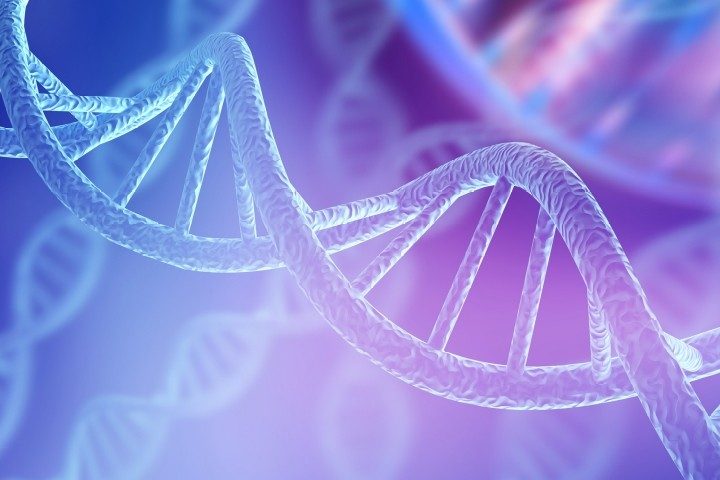
How do chemicals “decide” to become alive? That they can, and did, is essentially the basis for today’s widely accepted origin-of-life theory. But Rice University professor James Tour, a synthetic organic chemist who is widely considered one of America’s leading experts in nanotechnology and nanoengineering, says this theory is not only unproven but untenable. Moreover, he states that in private, many fellow scientists agree with him.
Reporting on the story, the College Fix writes that students “across America are taught an origin of life story that goes a little something like this: billions of years ago, energy from the sun, lightning, and Earth’s heat combined with the planet’s early atmosphere of hydrogen, methane and other gases, creating chemical reactions that formed molecules in a primordial soup that eventually produced a cell, in other words, life.”
But asserting that this is “highly improbable,” Tour says “that current research into the origins of life fails to explain not only the formation of the first cell, but the parts that make up the cell, such as carbohydrates, proteins and nucleic acids such as RNA and DNA,” the Fix further informs.
“Tour, who is also a professor of materials science at the private, Houston-based institution [Rice], has become over the last five years the leading critic of origins of life research, pointing out that there is not one precise scientific explanation or illustration of how RNA or a single protein was formed by chance, let alone a whole cell, within Earth’s primordial soup,” the site continues.
In other words, contrary to claims in school textbooks, newspapers, and by Ph.D.’s, Tour says that the origin of life still has not been explained.
“‘This is how far the misunderstanding has gone, even science professors — even biology professors — think that … we understand the ways to build life. We do not,’ Tour said in one of many videos on YouTube that feature his take on the subject,” the Fix also relates.
The professor elaborated on the implausibility of current origin-of-life theory in March, writing:
While organisms exploit chemistry for their own ends, chemicals have never been seen to assemble themselves into an organism. Origin-of-life research keeps attempting to make the chemicals needed for life, and then to have those assemble toward something to which they are inherently indifferent. But try as they might, without preexisting life no researchers have ever seen molecules assemble into a living cell, or anything even remotely resembling a living cell. Contrary to the hyperbole of press reports, any synthetic molecularly derived structures that have been touted as being cell-like are in reality far from it. This situation might change in the future, but it is unlikely to change under the current course of research. Scientists have no data to support molecular “evolution” leading to life. The research community remains clueless.
As I put it, in layman’s terms, in the 2008 essay “Intelligent Design and Evolution,” how “is it that chemicals can suddenly ‘decide’ to become alive?”
“Moreover, even if they somehow did, why would they have a will to continue living and become more complex?”
Below is a video in which Tour relates the concepts.
In the above, the professor outlines the improbability of current origin-of-life theory by pointing out the following:
- Aside from carbon and water, amino acids that will “hook together” to form proteins are also necessary for life. But it’s very difficult to accomplish this and requires “activation steps.”
- “In nature, in biology, once you have life this is all done with nature’s little machines called enzymes,” Tour explains. “But what we are talking about is prebiotic [chemicals-only, pre-life], long before enzymes themselves are made. And the enzymes themselves are made out of the amino acids in proteins.”
- After the amino acids there must be carbohydrates that hook together, but the “hooking together pattern is extremely complex,” says Tour.
- For example, the six units of the carbohydrate d-mannose have more than one trillion hooking-together combinations, but only one will work. Moreover, lipids are necessary to help form cells, but must have “two tails” to be stable enough to do so.
“How is that done in a prebiotic system? Nobody knows,” Tour tells us.
While Tour is a Messianic Jew, he points out that he doesn’t wish to be known as an Intelligent Design proponent. Rather, he operates within the constraints of science when analyzing conventional origin-of-life theory and exposing its fallacies.
“I do not know how to use science to prove intelligent design although some others might,” he admits on his website.
“Tour said that privately, many science colleagues admit to him that he is right,” relates the Fix. So why do so few go public? New York University law and philosophy professor Thomas Nagel, an avowed atheist, provided the answer in his 2008 essay “Public Education and Intelligent Design.”
An anti-religious spirit in academia “has resulted in a counterorthodoxy, supported by bad arguments, and a tendency to overstate the legitimate scientific claims of evolutionary theory,” he wrote. “Skeptics about the theory are seen as so dangerous, and so disreputably motivated, that they must be denied any shred of legitimate interest.”
Yet are they really, truly “seen” that way? Or is it a rationalization? One could get the feeling that this is another example of people silencing debate because they fear they can’t win it.
Perhaps the evolutionists know in their hearts what Tour told the Fix, that we “are nowhere close to an understanding of life’s origin” — but lack the intellectual honesty to admit that they are merely guardians of a faddish and unfulfilling faith.



